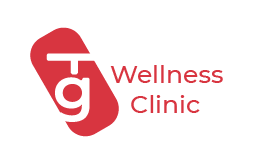Common questions about Acupuncture Treatment
What is acupuncture?
Acupuncture inserts needles or applies heat (Moxibustion), pressure (Tuina), and other treatments (Cupping / Guasha) to certain places on the skin, called acupuncture points (or acupoints), to cause a response from the body in the physical functions changing or chemical releasing (hormone and endorphin). The use of acupuncture is part of traditional Chinese medicine (TCM). TCM is a medical system that has been used for thousands of years to prevent, diagnose, and treat disease in China and other Asian countries.
Traditional Chinese acupuncture is based on the belief that qi (vital energy) flows through the body along a network of paths, called meridians. Qi is said to affect a person’s spiritual, emotional, mental, and physical condition. When a person's yin and yang are not in balance, qi can become blocked. Blocked qi causes pain, illness, or other health problems. TCM uses acupuncture, diet, herbal therapy, meditation, physical exercise, and massage to restore health by unblocking qi and correcting the balance of yin and yang within the person.
Traditional Chinese acupuncturists practice acupuncture according to the long-standing traditions of Chinese medicine. However, acupuncture which is used in a Western medical setting, has different theories about meridians and acupoint locations.
How many treatment sessions are needed for my case?
That depends on the case. In some cases, the benefit of treatment such as acupuncture can be quite dramatic — you may feel the benefits after one session. In other cases, the response may be more gradual. In general, you should notice at least some small changes in your condition within four to six treatments if you follow the treatment plan. However, the majority of our patients feel much better after their first visit.
How do I know which treatment is right for me?
At TG Wellness Clinic, our professional team will assess the case and advise a proper treatment for patients. Traditional Chinese acupuncture techniques are administrated precisely.
The World Health Organization (WHO) has compiled a list of symptoms, syndromes, disease processes, traumas and conditions that have definitely been proven as effectively treated by acupuncture.
In an official report, Acupuncture: Review and Analysis of Reports on Controlled Clinical Trials, the WHO has listed the following symptoms, diseases and conditions that have been shown through controlled trials to be treated effectively by acupuncture:
Neck Pain
Tennis Elbow / Golf Elbow
Sprains / Strain
Facial Pain (including TMJ disorders)
Dental Pain
Tempromandibular Joint (TMJ) Syndrome
Rheumatoid Arthritis
Induction of Labor
Correction of Malposition of Fetus (breech presentation)
Morning Sickness
Nausea and Vomiting
Postoperative Pain
Stroke
Essential Hypertension
Primary Hypotension
Renal Colic
Leucopenia
Allergic Rhinitis, Including Hay Fever
Biliary Colic
Depression (including depressive neurosis and depression following stroke)
Bacillary Dysentery
Primary Dysmenorrhea
Epigastralgia
Peptic Ulcer
Acute and Chronic Gastritis
Is acupuncture treatment safe?
Yes, acupuncture procedure is safe if it is performed by a qualified, licensed Acupuncturist. The fine needles used to penetrate the skin are sterilized and disposed of after a single use.
The risks of acupuncture:
The risks of acupuncture are low if you have a competent, certified acupuncture practitioner. Possible side effects and complications include:
Soreness. After acupuncture, you might have soreness, minor bleeding or bruising at the needle sites.
Organ injury. If the needles are pushed in too deeply, they could puncture an internal organ — particularly a lung. This is an extremely rare complication in the hands of an experienced practitioner.
Infections. Licensed acupuncturists are required to use sterile, disposable needles. A reused needle could expose you to diseases, such as hepatitis.
Not everyone is a good candidate for acupuncture or for particular types of acupuncture. Conditions that may increase your risks of complications include:
Bleeding disorders. Your chances of bleeding or bruising from the needles increase if you have a bleeding disorder or if you're taking blood thinners, such as warfarin (Coumadin), so let your acupuncturist know.
Having a pacemaker. Acupuncture that involves applying mild electrical pulses to the needles can interfere with a pacemaker's operation.
Being pregnant. Some types of acupuncture are thought to stimulate labor, which could result in a premature delivery.
Does OHIP covers the acupuncture cost?
In Ontario, although the Traditional Chinese Medicine Act (2006) has been passed by the provincial legislative assembly as an alternative healthcare service, the cost of acupuncture is not covered by OHIP at this moment. However, most of the extended insurance plans do cover the cost due to the highly recognized effectiveness of acupuncture in helping patients restore their health.
For more details about the coverage and claim procedures, please check with your insurance policy administrator.


